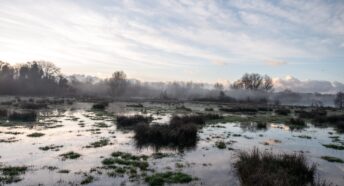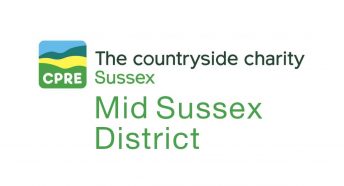Campaigns… and how (hopefully) to win them

It is all too familiar a scenario: a local authority proposing to build thousands of houses in areas wholly unsuitable for such levels of development. When one council in north Kent targeted sites in the Green Belt, an impressive operation to challenge the potential environmental destruction was launched. Here, Alex Hills, chairman of CPRE Kent’s Gravesham committee, gathers some of the leading players to explain how they rallied residents to the cause.
At the end of last year without warning, and with rising numbers of Covid-19 cases making people worry whether they were going to have a Christmas or a job, Gravesham Borough Council began a Regulation 18 Stage 2 consultation.
The proposal was for 3,790 houses within the Green Belt envelope over 21 sites, all being highly damaging to the rural area.
The consultation was a perfect example of how not to run a such a process during pandemic restrictions and in the run-up to Christmas.
GBC appeared to put every possible barrier in the way of people responding – the irony of it complaining about the way Highways England carried out the Lower Thames Crossing consultation was not lost on residents.
As chairman of the CPRE Kent’s Gravesham committee, I am blessed to have an experienced hard-working committee who make me look good – they of course rose to this massive challenge.
At the start of the campaign, we held a large Zoom meeting. The campaign slogan Stop the Green Belt Grab was created by local resident Peers MS Carter. Peers was a creative director at Saatchi & Saatchi, so we really have drawn on excellence from the talent in our borough.
If you can inspire people to act, it is amazing the talents you find and we were lucky to find many such people during the campaign.
I will let the committee members say in their own words what they did during the consultation process…
Pat Luxford: We were able to bring together all our contacts and residents’ groups from previous campaigns. This enabled CPRE Kent to ensure the campaigners worked together with one message. It could so easily have become various groups saying ‘Not in my backyard’ as the proposed sites were spread over various Green Belt areas of Gravesham.
Despite our inability to sit around a table to make decisions or to hold public meetings, the residents’ response was extraordinary. By pulling together a group of dedicated volunteers whom we called foot soldiers, we were able to get door to door with updated information and easy-to-follow draft objection letters to GBC, making us so much more effective. By reaching out and working with like-minded groups and individuals, we were able to beat lockdown.
James Ferrin: My input into the campaign was dealing with social media. We used two main avenues, organic posting and sharing, and then paid for advertising.
We used the CPRE Kent page as the main vehicle for this. We wrote the posts and then David Mairs posted them.
The organic side was simple. Once the posts were up, we shared them across all the community groups in the area. There are some 30 or so that cover Gravesham. Comments were monitored and those asking for more information were helped.
The paid-for element helped us reach those harder-to-reach people who were not members of groups. We set the targeting of location, interests and age and then put £50 behind the activity and set it live.
We did a couple of posts, the first giving general information and the second providing wording for a standard letter that GBC had agreed would count.
The results from the paid activity were a total reach of 18,315 people and a total of 3,029 engagements that equated to £0.016 per engagement. Pretty good-going!
Noel Clark: The committee decided we needed a website to quickly post reactions to the changing consultation as GBC changed the consultation documentation during the process. We used a website as the central repository of information to avoid having to walk revised notes around to our supporters.
We used justgiving.com for fundraising as our costs were relatively small and several locals had expressed interest in contributing. Over the course of the campaign, we raised £570, which was used largely on printing and banners. We found the need to be local and reflect issues that affected us directly was important, but ultimately the outcome will be determined by national policy.
Jackie Luckhurst and Sue Gofton: During the first phase, thousands of leaflets informing communities of the threat to the Green Belt were delivered. The second phase entailed the delivery of printed objection letters; these had to be distributed in the shortest time possible to meet the GBC deadline of December 31, 2020.
This was coupled with banners and placards placed in prime locations and attached to householders’ properties. The volunteers had been sourced through social media and community associations and support groups. Time was of the essence as we were in lockdown and the deadline was looming. The postal service was under pressure as it was the Christmas period and Covid-19 had taken its toll, so help was given by shops that were happy to have sealed drop-boxes where people could post their objection letters for free with their personal data secured. This worked incredibly well.
Frequent updates were given on social media until the deadline was met and the letters from the drop-boxes were hand-delivered before the deadline. In terms of the Covid-19 difficulties and the deadline, it was deemed a success, based on communities pulling together and forging great camaraderie.
And back to Alex Hills for the final word… The Gravesham committee is an equal partnership (as chairman I do not have a casting vote) of six very different individuals with different skills, but we all respect and trust each other, which means we can debate openly. This was a vital asset as we had to set up a campaign structure from scratch, working with the hard-working Higham, Shorne and Cobham parish councils.
We also had to respond quickly as the campaign developed, so weekly Zoom meetings were important.
Covid-19 prevented us from such options as public meetings, while media disinterest meant that leaflets, the website (www.cpregravesham.org) and social media were our main tools in the campaign. Seeing local groups as an asset and working with them was another key part.
My role was very much that of coordinator and making sure everyone was kept informed about what was happening – this included local councillors. The fact we were able to keep the campaign non-political and have so many saying very clearly to GBC that the Green Belt is not for building on is a great compliment to the committee.
Monday, June 21, 2021
- A number of important documents have yet to emerge. For example, a rigorous transport plan and a finalised air-quality assessment. The latter is critical given that allocations at Teynham will feed extra traffic into AQMAs.
- There seems to be no coherent plan for infrastructure delivery – a key component of the plan given the allocations being proposed near the already crowded Junction 7.
- There seems to have been little or no cooperation with neighbouring boroughs or even parish councils within Swale itself.
The removal of a second consultation might have been understandable if this final version of the plan were similar to that being talked about at the beginning of the consultation process. It is, however, radically different in the following ways:
- There has been a major shift in the balance of housing allocations, away from the west of the borough over to the east, especially around the historic town of Faversham. This is a move that raises many concerns.
- A new large allocation, with accompanying A2 bypass, has appeared around Teynham and Lynsted, to which we are objecting.
- Housing allocations in the AONB around Neames Forstal that were judged “unsuitable” by the council’s own officers have now appeared as part of the housing numbers.
- Most of the housing allocations being proposed are on greenfield sites, many of them on Grade 1 agricultural land – a point to which we are strongly objecting.
Concerns about the rush to submit the plan
The haste with which the plan is being prepared is especially worrying given the concentration of housing in Faversham. If the town is to take a large amount of new housing, it is imperative that the policies concerning the area are carefully worked out to preserve, as far as possible, the unique nature of the town. The rush to submit the plan is likely to prove detrimental.
As Swale does not have a five-year land housing supply, it is open to speculative development proposals, many of which would run counter to the ideas contained in the current plan. Some are already appearing. This is a common situation, and one that, doubtless, is a reason behind Swale’s haste.
Our overriding fear, however, is that this emphasis on haste is ultimately going to prove counterproductive. This is because it is our view that the plan, in its current form, is unlikely to pass independent examination. We are urging Swale to listen to and act upon the comments being made about the plan and to return the plan to the council with appropriate modifications before submitting it to the Secretary of State.
Essentially, this means treating the current consultation not as the final one but as the ‘lost’ second consultation.
The consultation ends on Friday 30 April and we strongly urge residents to make their opinions known if they have not already done so.
Further information








